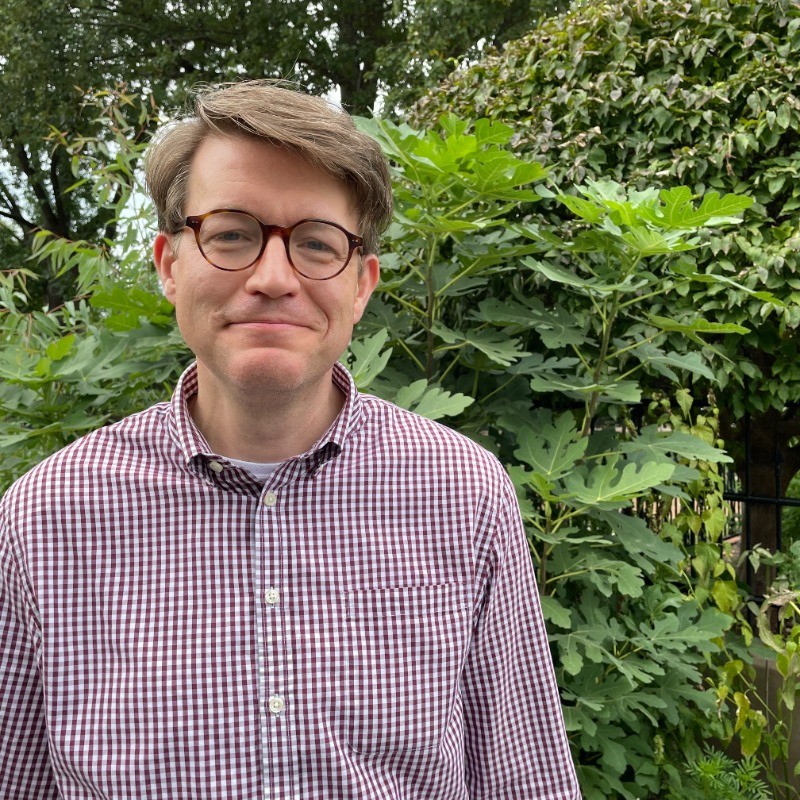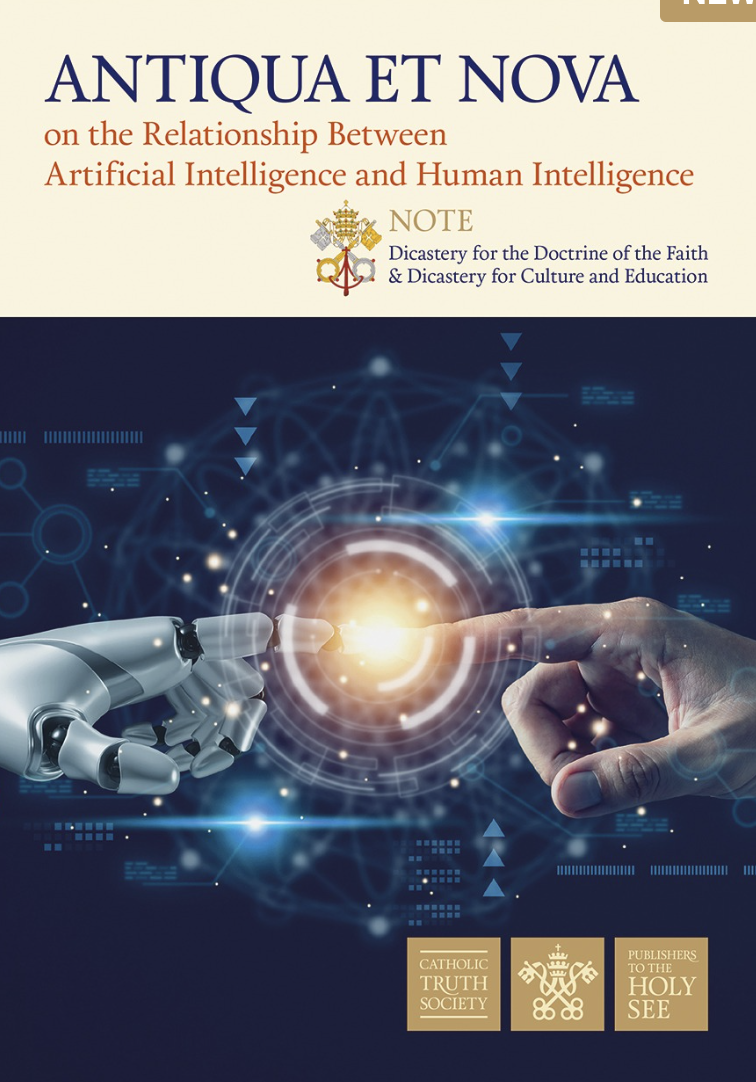By Emma Hardy
Andy Brown, the senior pastor at First Baptist Church Starkville, talks through the phone with a fountain pen in his hand. His notepad is sitting in front of him with the reporter’s name on it at the top, and he is ready to converse, share ideas, and take notes about artificial intelligence and its role in religion.
“First, I think that there’s two different postures that somebody can have with AI. One is they can lean away from it, shy away from it, close the shutters, lock the door, stay in the dark, or we can lean into it and really see this as a Gutenberg press kind of moment,” Brown said.
Brown said that AI has opened the door for people to be more productive. He said it is a tool to be used, but people should remember that it is not the authority. He said his church has used AI to make summaries of sermons and to transcribe sermons, but it hasn’t leaned into the AI opportunities all the way.

“Keep in mind that the way AI is being presented to us is as if it’s autonomous and self-existing, but AI is just a model. Input, output. Who controls the input? The user. So oftentimes, when you’re having a conversation with AI, it’s just a conversation with yourself,” Brown said.
The document Antique et Nova (Old and New) is a note written by Roman Catholic leaders Cardinal Victor Manuel Fernández, Cardinal Telentino de Mendonça, Monsignor Armando Matteo and Reverend Paul Tighe, all from the Vatican. It details the Vatican’s thoughts and concerns on the growing presence of AI, and how that can be seen through the religious lens.
“With wisdom both ancient and new (cf. Mt. 13:52), we are called to reflect on the current challenges and opportunities posed by scientific and technological advancements, particularly by the recent development of Artificial Intelligence (AI),” the note says.
This document explores the ideas that the whole world has gotten so used to contemplating. AI is a fast-growing technology, and it can be utilized while also cautiously keeping in mind the negatives of the software.
Andy Brown said that AI has been around for a long time, just in different forms, as Microsoft Word, Pages or Google Docs. The important factor is figuring out how AI can be used in the advanced model that it is becoming.
“The tools are different. And I think as long as we see AI as a tool to be used, then I think that's the positive. The negative is, is when we become over-reliant upon AI, and we let it start replacing our thinking,” Brown said.
AI has become increasingly more present in humans’ daily lives, but in order to talk about AI, there must be a discussion on what it is at its heart.

Professor Jonathan Barlow, a Data Science professor at Mississippi State University and educated theologian, said that the advancement of AI shouldn’t be as scary as people expect.
Barlow said that anything that automates decision making could be called AI in the earlier years, but the modern AI is trained through a standard three-step process.
First, data scientists can take a particular learning algorithm and analyze the data while forming a certain model on how a smart person might talk about a smart topic. They expose the systems to a lot of material in pre-training, the first step. In the second step, post-training, they expose the systems to question and answer pairs, and in the final step. The third step is for the different algorithms to talk to themselves and come up with nice answers. Barlow said they can theoretically be trained on anything that has a pattern and sequence.
“They’re [AI systems] always BS-ing a little bit, but if there’s a lot of material about a certain topic, they BS in a very intelligent way, the way humans would if we had read a lot about a certain topic,” Barlow said.
He also said that if the AI system hasn’t read a lot on a topic they tend to “hallucinate.” This refers to when a large language model presents a fact that isn’t quite true.
“But they’re always hallucinating. It’s just most of the time they’re hallucinating with great probability,” Barlow said.

Antiqua et Nova agrees with the idea that AI can very well be a great tool for innovation and human development, but it also comes with some concerns that need to be recognized.
The document states that while AI can be a valuable tool, only a human can have the ultimate decision making power that follows moral and ethical guidelines, a stance that both Barlow and Brown agree on.
“In this sense, human intelligence plays a crucial role not only in designing and producing technology but also in directing its use in line with the authentic good of the human person,” says Antiqua et Nova.
This value can be used in the question of whether it is ethical to write a sermon with AI. On its surface, the question may seem cut and dry. But when looked into more deeply, there can be many different answers.
When asked about authorship, one might pose the idea that AI can’t really come up with anything new because it’s programmed on a lot of data, and it’s meant to give an answer that mimics the data they have been given. One might also question if that is what humans do.
“Isn’t a hallucination a little bit like coming up with something new? I mean, if it comes up with a journal article that hasn’t been written, if you think it sounds plausible, then maybe it should be written. So I don’t know. I mean, that’s kind of what human scholars do. I would say, probably, a very small percentage of human beings ever come up with anything original. So I don’t know what we’re expecting,” Barlow said.
Along with that, the writing of AI might be different when compared to that of a human. Barlow brought up a conversation he had with a Lutheran priest who experimented by
making AI write his sermon, giving it to his congregation, and calling his parishioners throughout the week to come clean and see if they had noticed. Many noted that they had noticed something was different but couldn’t quite put their finger on why.
“It [AI] writes some beautiful stuff, but it’s sort of a generic beautiful. Instead, humans are a bit weirder, and we have a more particular beauty to the things we do,” Barlow said.
Barlow noted that it can be seen as unethical to have AI write a sermon and pass it off as a priest’s own, just as it would be considered plagiarism to do that of another priest.
“A big part of your week and why people are paying you [a priest] is because you went to seminary, you were trained to understand Greek and Hebrew so that you could read the scriptures and incorporate them into your sermon in an intelligent way and make sense of the text and teach people things that we believe to be true. That’s the whole goal,” Barlow said.
Barlow shared the opinion that AI can be used in its best sense when it is used as a helper. It can be used to translate languages. It can be used to edit a sermon and make it sound better. It can be used to gain feedback on already written sermon from a virtual 10-year-old or a virtual 60-year-old. AI can be used as a test subject, just as there are different stages of testing a drug. AI can be used in its best capacity, not as a singular creator, but as a tool to enhance what a priest has already come up with.
“It’s like a shovel or a hammer. It’s a good thing that we need to use to make the world a better place. That’s definitely a part of the philosophy of that document,” Barlow said about AI and Antiqua et Nova.
Brown, the practicing pastor, said that AI can help with many things, maybe by looking for grammatical errors or summarizing a work that has already been written. In the end though, he doesn’t think it can compare with the human experience religious leaders share and relate to religious practice.
“To preach before the congregation. Well, AI cannot preach that message. It can’t present that message. It can help clarify a message. It can maybe help develop a sentence or a thesis or a main idea, but it can’t deliver it,” Brown said.
Antiqua et Nova outlined some major concerns of AI, but ultimately came to the same conclusion: that AI probably shouldn’t be used in a singular sense but in a helpful
capacity to enhance human creation with the guidance of human conscience.
“From this perspective of wisdom, believers will be able to act as moral agents capable of using this technology to promote an authentic vision of the human person and society. This should be done with the understanding that technological progress is part of God’s plan for creation—an activity that we are called to order toward the Paschal Mystery of Jesus Christ, in the continual search for the True and the Good,” the note says.